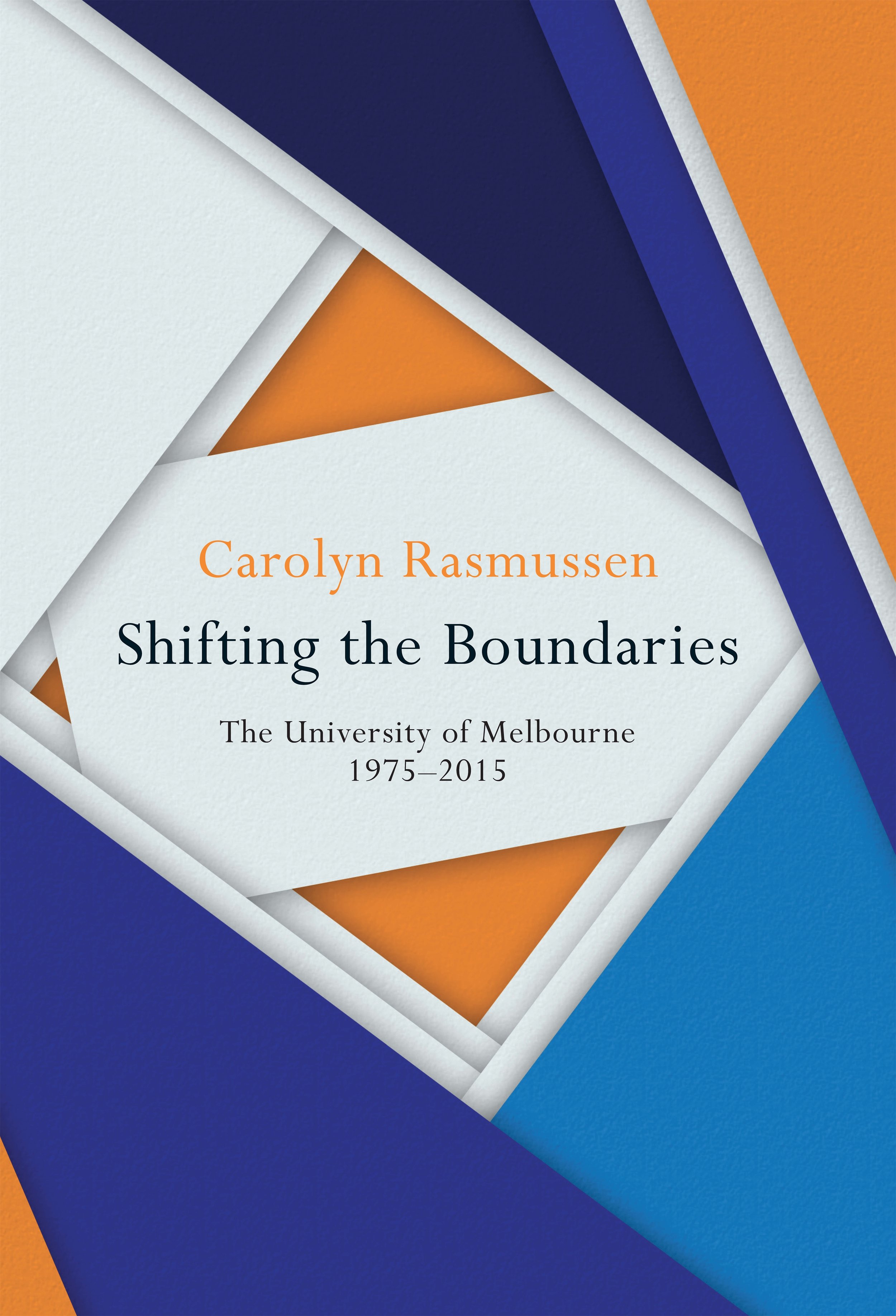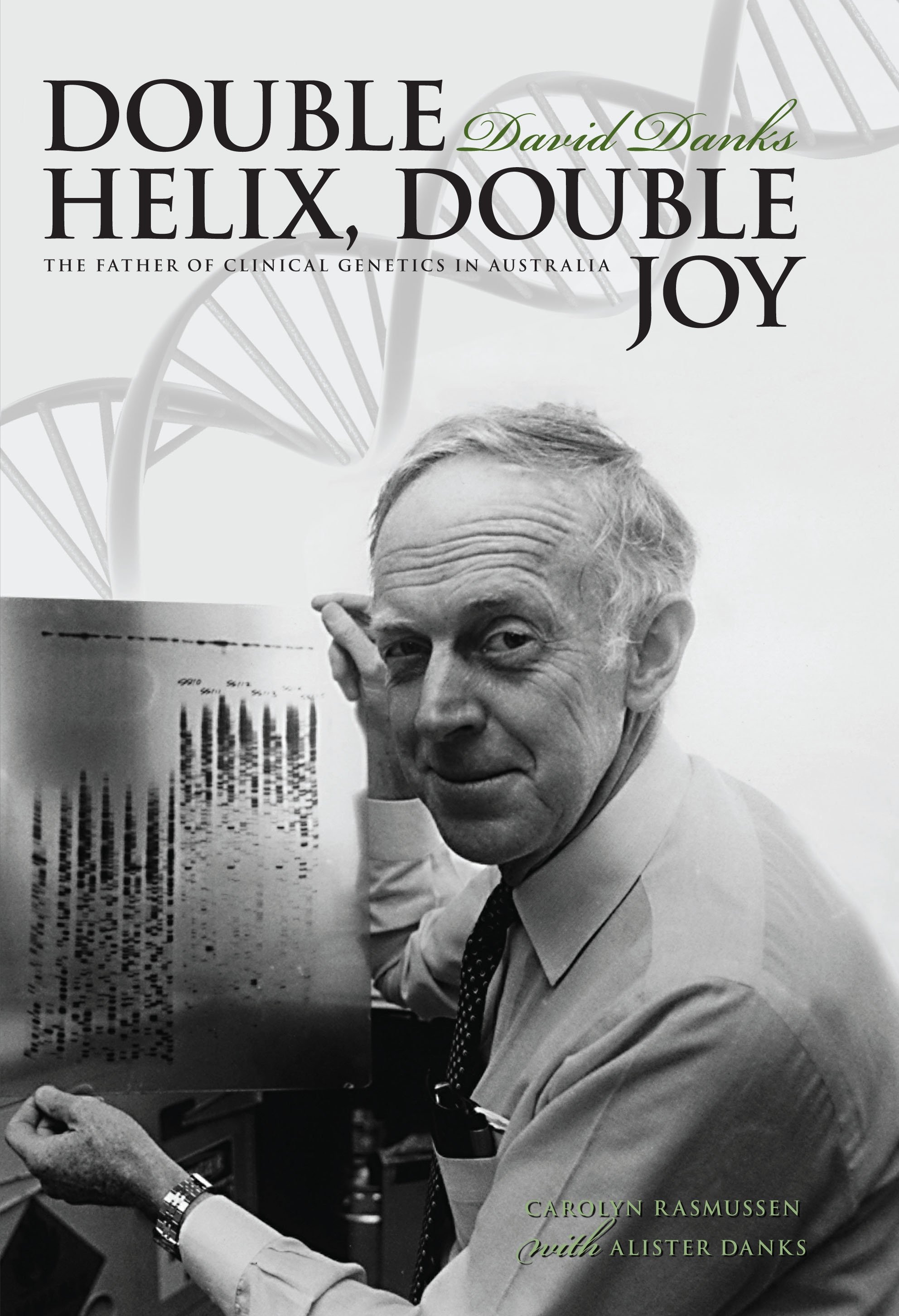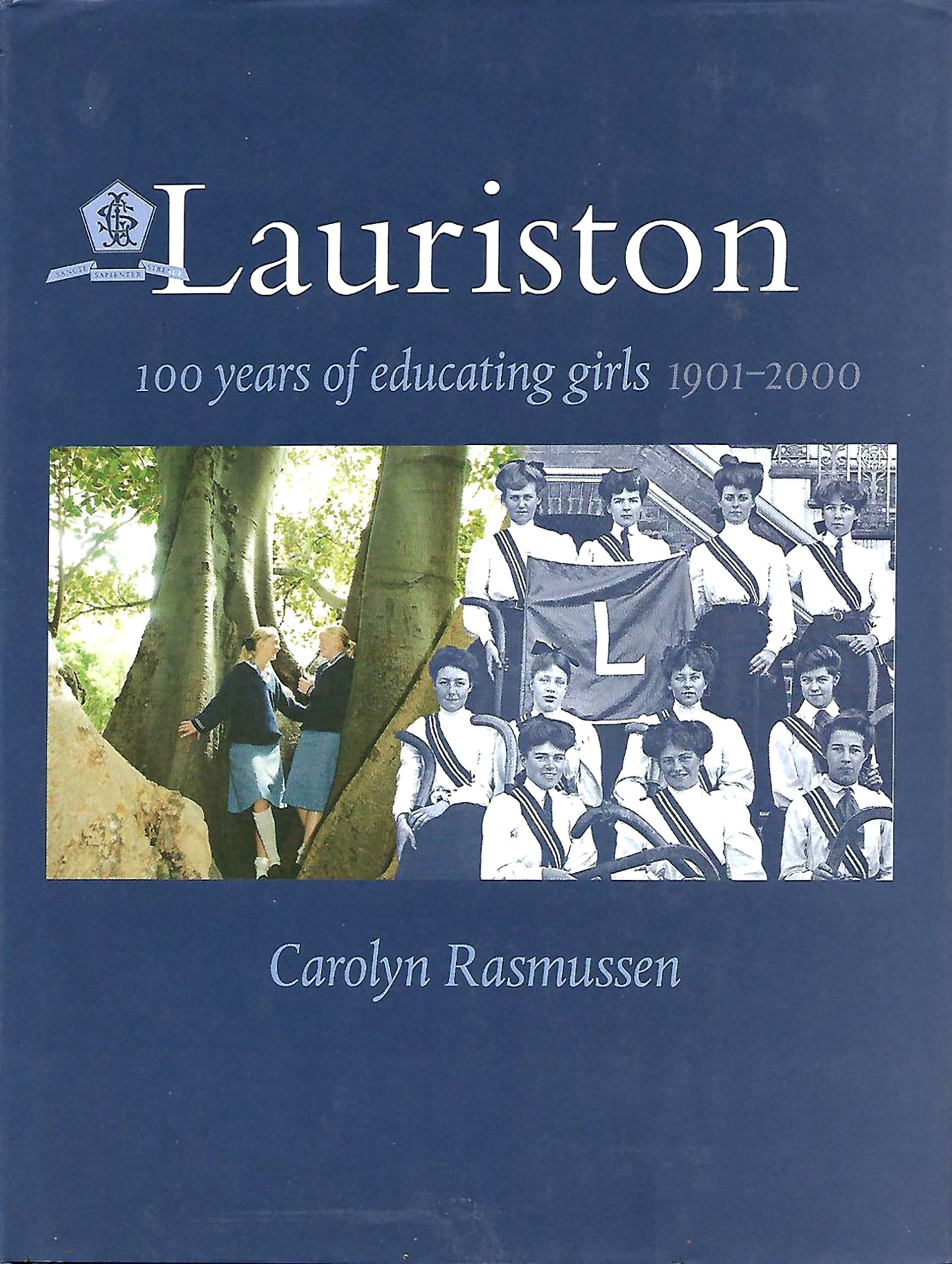
Historian / Biograher / Author
Books Authored
-

THE BLACKBURNS
Private Lives, Public Ambitions
MUP, Carlton, 2019
History Publication Award Winner, Victorian Community History Awards, 2019.
When socialist barrister and aspiring member of parliament Maurice Blackburn met Doris Hordern, ardent feminist and campaign secretary to Vida Goldstein, neither had marriage in their imagined futures. But they fell in love-with each other as much as with their individual aspirations to change the world for the better.
Theirs would be an exacting partnership as they held one another to the highest ideals. They worked as elected members of parliaments and community activists, influencing conscription laws, benefits for working men and women, atomic bomb tests, civil rights and Indigenous recognition. Together, they shook Australia.
-

SHIFTING THE BOUNDARIES
The University of Melbourne 1975-2015
MUP, Carlton, 2018
The University of Melbourne was already over 110 years old when this history begins. The second oldest university in Australia, it has been graced with a number of histories written by eminent historians. Each of these histories has documented the University's evolution and diversification from the perspective of their time.
Shifting the Boundaries: The University of Melbourne 1975-2015 continues that story, but the period covered is entirely within living memory. It pauses at ten-year intervals, the first at 1975, to look back at the previous decade. We are invited to enter the University of Melbourne as a living institution, and to watch it as it responds to changing expectations of students, staff and community, to shifting policy frameworks and to an evolving economic and social context.
The principal themes that arc across this story involve massive growth, the evolution towards a research-intensive institution, changing pedagogical imperatives, bureaucratisation and internationalisation in the face of declining public funding.
-

A WHOLE NEW WORLD
100 years of Education at University High School
Australian Scholarly Publishing, North Melbourne, 2010. Commended, Best Print Publication, Victorian Community History Awards, 2011.
University High School occupies a unique place in the Victorian State education system. Opened as a no-fee, co-educational secondary school in 1910, its primary role was to provide a practising school for trainee teachers. From the beginning, its students flourished in a purposeful environment that encouraged independence of thought and individuality, while nurturing significant aedemic achievement.
In 1915, the incoming pricipal Mathew Sharman told the assembled pupils, ‘Your thoughts and actions are being directed along new channels. You are living in a new world’. Generations of teachers and students have subsequently worked to maintain and refurbish that ‘new world’.
This centenary history builds on the UHS Jubilee history by Alice Hoy, and draws extensively on 350 questionnaire responses from alumni, interviews, and other material from past pupils and teachers. It presents a vivid picture of the ‘new world’ that was and is UHS and its place in the lives of its students and the wider community.
-

DOUBLE HELIX, DOUBLE JOY
David Danks: The Father of Clinical Genetics in Australia
MUP, Carlton, 2010
Professor David Danks explained in a public lecture revealingly titled, Double Helix, Double Joy, that “Even from its infancy it was apparent that the double helix was going to change not only science, but also the community's image of science.”
'Double Joy' conveyed his sense that the developments cascading from Watson and Crick's initial DNA discovery would yield immense benefits for people generally, and also for his own research ambitions. A double joy made concrete in the foundation of the Murdoch Institute for Research into Birth Defects where he could fully implement his vision of unfettered basic scientific research wedded to clinical practice and services to public health.
-

POLITICAL TOURISTS
Travellers from Australia to the Soviet Union in the 1920s–1940s
MUP 2008
For Socialists and many liberals, the Soviet Union of the 1920s-1940s was the site of the great Socialist Experiment, and most Australians who travelled there wrote about their extraordinary experiences, and the recent opening of the Soviet archives gave access to the Soviets’ reactions to their visitors.
Collecting the research of leading historians and writers, Political Tourists explores Soviet tourism through figures such as Eric Ashby, RM Crawford, Reg Ellery, Neill Greenwood, Esmonde Higgins, Katharine Susannah Prichard, Betty Roland and Jessie Street. Drawing on both Australian and Soviet archives, this is a unique insight into of the Soviet experience in the 1920s–1940s.
-

INCREASING MOMENTUM
Engineering at the University of Melbourne 1861-2004
MUP, Carlton, 2004
‘Useless and undesirable’. So said Engineer-in-Chief of the Railways, Thomas Higinbotham, in 1861 on hearing Melbourne University had established Australia’s first engineering course.
How wrong he was.
At the height of the industrial age under the leadership of Professor W. C. Kernot, the degree course rapidly grew to embrace an entire faculty to feed the demands of a developing nation hungry for engineers and their expertise.
Increasing Momentum traces the history of the Faculty from its origins, through WWII to the present day and explores the development of courses as varied and far-reaching a metallurgy and software.
The book turns a contemporary eye on graduates and their remarkable achievements in the outer world, observing instances of those who have returned to teach the next generation to continue the Faculty’s legacy of innvation and research.
Increasing Momentum plays an important role in excavating the Faculty’s past and determining the crucial role the Faculty has played in the history and development of engineering in Australia.
-

MILESTONES
In the History of the Faculty of Science University of Melbourne
Austehc, 2003
-

A MUSEUM FOR THE PEOPLE
A History of Museum Victoria and its Predecessors 1854-2000
Scribe Publications, Carlton, 2001
Best Print Publication, Victorian Community History Awards, 2002.
This is a superbly written, designed, and illustrated history of Victoria's museums of natural history, ethnography, applied science, technology, and social history from 1854 to the present.
This mainly chronological narrative is interspersed with short studies by 46 authors on the objects, specimens, stories, and people that are the essence of Museum Victoria. It will appeal to the general reader with an interest in museums and history as well as those interested in the cultural, social, and technological growth of the state of Victoria in Australia.
-

LAURISTON
Lauriston: 100 years of Educating Girls
The Helicon Press, Sydney, 1999
Education has played an important role in the progress of women from the domestic to the public sphere. Before they could begin to challenge the barriers to their participation in civic and cultural affairs life, let alone paid employment and the professions, they had first to acquire the educational standards required of their brothers. Lauriston Girls’ School was founded in 1901 in Armidale by Margaret and Lilian Irving in the firm belief that they could make a significant contribution to that cause. This history traces the development of Lauriston in the context of the changing social, educational and economic climate paying special attention to the limits imposed on a girl’s ability to conceive a future that departed radically from the conventional expectations of her time. Lauriston’s headmistresses sought strenuously to enhance the capacity of women to lead purposeful and fulfilling lives and each generation found access to paid employment and public life easier, but the story also reveals how recent it is, despite the rhetoric, especially in the area of maths and science provision, that girls have had access to a curriculum and facilities that truly matched those of their brothers. This history is also a tribute to a remarkable success story, for Lauriston is one of a very few privately-owned schools to have survived the course of this century and its writing a response to the deep loyalty and affection with which Lauriston is regarded by those who have been associated with it.
-

A PLACE APART
The University of Melbourne: Decades of Challenge
MUP, Carlton, 1996
When Raymond Priestley, former Antarctic explorer, arrived from Cambridge in 1935 to become the first salaried Vice-Chancellor of the University of Melbourne, he found a small institution ‘admirable in many respects’, with outstanding personalities and distinguished teachers and research workers, but ‘financially starved, underhoused, ill-equipped and understaffed’. It enrolled a tiny proportion of the population of the State, in which it was the only university.
Sixty years later it is one of Australia’s largest and strongest universities, a conglomeration of teaching and research facilities, departments, institutes and centres with many purposes, spread over many locations.
A Place Apart charts the fortunes of the University of Melbourne during a period of great change, when Australia’s older universities had to respond to the demands of a changing Australian society, and the evolving policies of governments. It concentrates on the central decades between 1935 and 1975, in which the challenges multiplied. After successful improvisation in the years of post-war reconstruction – in which it built a branch at Mildura, as well as more than doubling its numbers – the University’s ill co-ordinated expansion in the 1950s brought financial and administrative catastrophe in the 1960s. After a long period of reform, complicated by the student and staff agitation for radical change in the early 1970, the university emerged better managed and much stronger, in both teaching and research, readier than most for the new challenges of the 1980s.
Implicit in academic thinking throughout the century has been the idea that the university is a special institution, ‘a place apart’, providing social experience for its students, and with obligations that stretch beyond its local society to the international world of intellectual discovery and critical thinking. That ideal has survived in the University of Melbourne, though with difficulty among the many other purposes it has acquired in responding so positively to decades of challenge.
The authors tell this story largely through the leading individuals involved. It is enlivened by some dramatic episodes, and by the idiosyncrasies and eccentricities always to be found in a university inhabited by extremely able staff and students.
-

THE LESSER EVIL?
Opposition to War and Fascism in Australia 1920-1941
University of Melbourne History Monograph Series, Melbourne 1992.
The Lesser Evil? traces the journey of opponents of war in Australia from the optimism of the 1920s when the 'war to end wars' had been fought and the League of Nations promised a more rational means of settling international disputes, into the 'popular front' of the 1930s as war once again seemed to be looming, to their final anguished confrontation with fascist aggression. The most successful popular front organisation in Australia, the International Peace Campaign, is taken as a case study to throw some light on the motivations, felings and difficulties of those 'pacifists' who came to believe, in the course of the 1930s, that fascism was a greater threat to a rational, humane world order than war. In essence a study of a dissenting minority, struggling to cultivate an informed, independent public opinion on foreign policy, this study adds some important detail to the present picture of Australia in the 1930s.
-

VITAL CONNECTIONS
Melbourne and its Board of Works 1891 to 1991
McPhee Gribble, Melbourne, 1991
At 3 p.m. on Wednesday 18 March 1891 the thirty-nine newly elected members of the Melbourne and Metropolitan Board of Works met for the first time. They were welcomed as the ‘fittest men to take charge of the business, and gentlemen of large experience’. Their business was to build and maintain a desperately needed underground sewerage system and to operate Melbourne’s water supply.
In 1991, the Board’s centenary year, more than 2.5 million people in Melbourne use the services provide by the MMBW every day. By turning on taps or flushing toilets each individual uses water that the board has harvested, stored, then distributed to a million properties. Dirty water and wastes are emptied into the sewers. Every building in Melbourne relies on the Board’s subterranean tracery of pipes. The insignia of the MMBW can be seen on manhole covers in the street, vehicles, pipes and many other places.
Very evident too is the Board’s history of caring for Melbourne’s rivers and creeks, its creation and management of fine metropolitan parks, disposal of industrial wastes, town planning, and the building of freeways. All Melbournians seem to have either worked for the Board at some time or know someone who has.
‘Public health is my reward’ is the Board’s motto today, and whenever any question of who could best provided Melbourne’s most vital services has been asked, the answer has always been the Board of Works.
Meticulously researched through archives and oral history, with tables, maps and copious pictures, this book provides a fascinating account of the Board’s development. It gives us a picture of life at the Board and life in the city over the last century. Through controversy, change and success, Melbourne and its Board of Works have been inseparable. And by virtue of its Board of Works, Melbourne can be proud today in having what very few cities if its size in the world can boast: pure reliable water.
-

POOR MAN'S UNIVERSITY
75 Years of Technical Education in Footscray
Footprint The Press of FIT, Melbourne, 1989
Footscray, that celebrated industrial suburb of Melbourne, has found a voice in this book. This is no ordinary dull history of the old Footscray Tech - rather it is a story of working class aspiration and the changing demands of industry and business for apprentices, skilled engineers, and latterly, white collar and professional workers.
It is also the story of the continuing struggle waged by people of the western suburbs against the parsimony and intransigence of politicians and bureaucrats determined to thwart the ambitions of working people.
The Footsceay Tech of 1916 grew into the Footscray Institute of Technology of 1968 and, while this book was being written, was looking to a new standing as a university of its own right. Under a succession of capable leaders - Arch Hoadley, Howard Beanland, Doug Mills - the old Tech grew, developed, changed, as did the community around it.
Readers will be intrigued by how many of today’s problems in higher education are not new, but also exercised the minds of previous generations.
This evocative new history will appeal not only to the old boys and girls but to all those concerned to understand the challenges facing Australian institutions of higher learning as they moved into a new period of mass education.
-

EARLY COLONIAL SOCIETY
Commentary and Documents
Nelson, Melbourne 1984
Early Colonial Society examines the quality and style of life in Australia for the first European settlers.
Society was complex with many disparate elements, and it faced several contradictory challenges. As well as having to contend with the commercial desires of its benefactor, the British Government, it had the conflicting requirements of being primarily a penal settlement and a new, functioning community with its own set of needs.
In this book Carolyn Rasmussen shows us how these challenges affected colonial life and shaped the structure of Australian society.
As part of the Topics in Australian History series, this book has equal portions of text, written documents and visual documents. Together the material ‘tells the story’, highlights themes, attempts explanations, offers interpretations and reveals those historical insights most relevant to the themes and issues.
In her introduction, Rasmussen states that one of her goals in writing this joint biography was to release Maurice and Doris Blackburn from other people’s footnotes. In presenting this fleshed out, likeable portrait of two vital, influential people who deserve to be more famous than they are, she has succeeded admirably.”
JACQUELINE KENT, AUSTRALIAN BOOK REVIEW